In the Pacific most of my bird watching skills/compulsions were turned toward fish-watching – for the simple fact that there just weren’t that many birds to watch! (Lots of ocean and not too much terra firma, you see). At least I could count on the usual armada of Frigates, Brown Boobies, Noddies and Terns throughout the Pacific.
The vast stretches of sea separating the islands, while making for less bird life, also meant that the birds of the islands were usually quite unique.
My first encounter of this was the White-Capped Fruit-Dove on Nuku-hiva in the Marquesas. If the guide had not told me it was a Dove, I would forever more have been looking for it among the parrots in my book. Its colouration and flight-pattern is that of a parrot! Have you ever noticed how a Dove flies? Its wing tips are pointy, and they thrust forward and push back their wings as if they’re swimming. These Doves, however, had rounded wing tips, and (perhaps being smarter than the usual dove, knowing it was in the air and not water) flew with steady wingbeats. My surprise was very great when I was told those bright green birds flying over there were Doves. Well, live and learn.
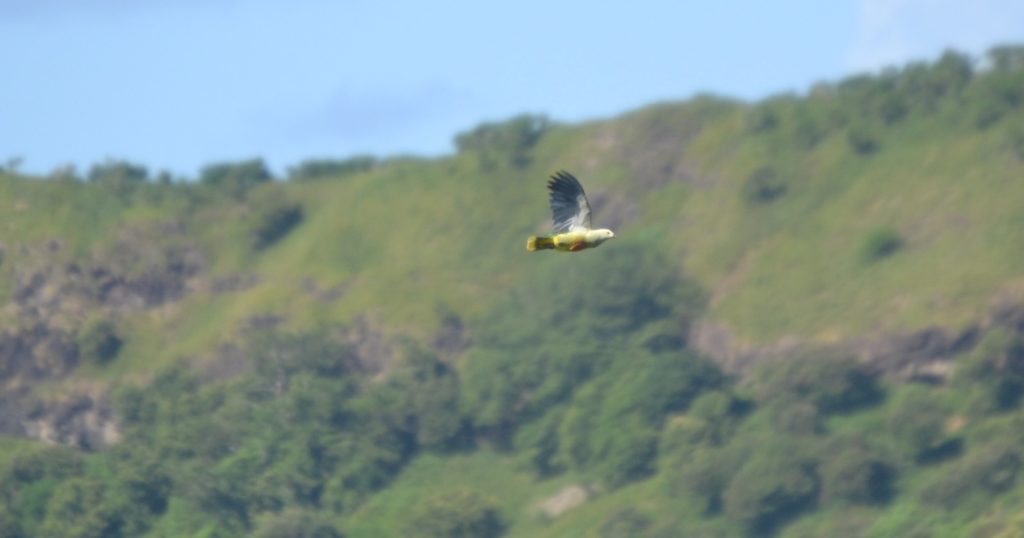
Sorry for the blurriness, but these birds were quite shy, so this was the best one I could get.
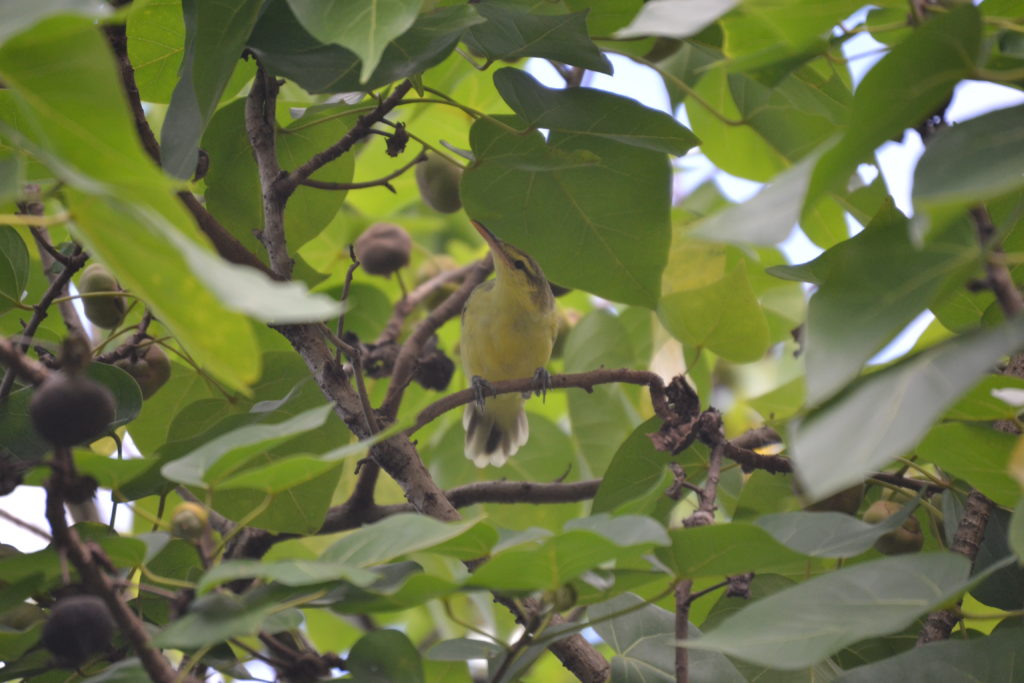
Knowing that there were not many birds, my Dad made special efforts to visit places on our way which might have special birds dwelling upon them. This was one of the main reasons why we stopped at Tahanea, an uninhabited atoll in the Tuamotos. Uninhabited, but not devoid of people – close to the two passages leading into the lagoon of the atoll, there were four or five other sailing boats.
We stayed close by the passages for a few days so that we could do some diving and socialising (we knew two of the boats from our stay in Panama), and then we weighed anchor and headed for the middle of the atoll where a small Greater Frigate breeding colony was supposed to be. We actually found the island : D (I think my Dad got coordinates off the internet), but getting onto this bird island was easier said than done. It turned out our anchoring options were limited to one tiny bay of about 30 meters deep. (To anchor in 30 meters you have to put out about 100m of chain).There was a brief debate about whether we should try this, also taking into account that we only wanted to stop briefly. I, for my part, really didn’t like the reef that would be very close to our right, nor the fairly brisk wind. In the end we did anchor, but Karin decided to stay on board (for some reason birds don’t seem to interest her all that much); I don’t remember whether or not we left the engine on for in case the boat started drifting and she needed to do something.
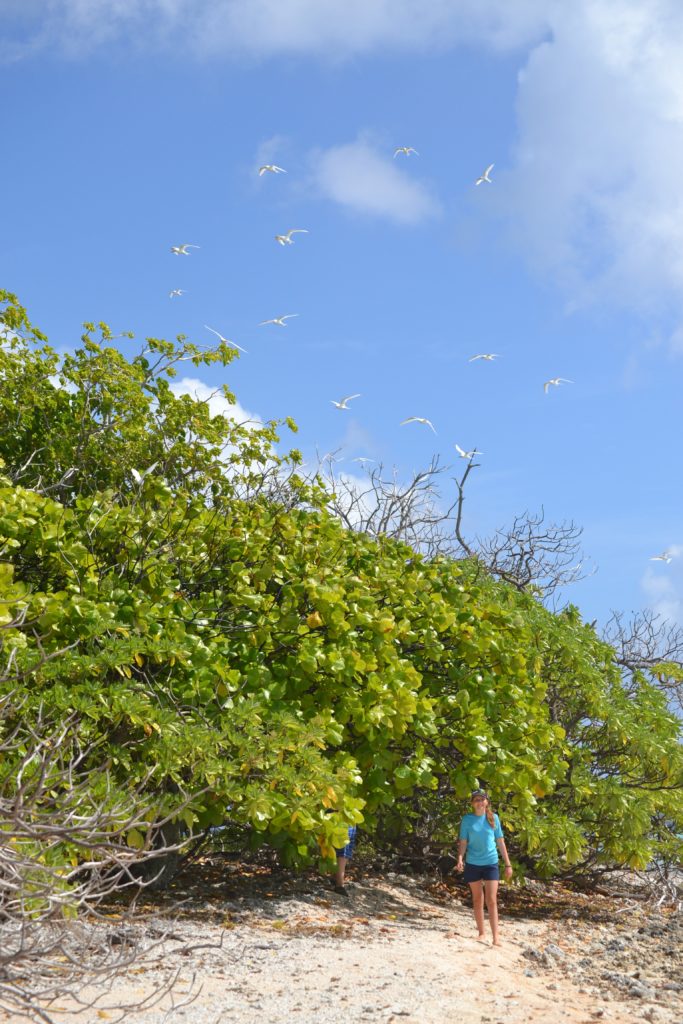
The air was always full of birds
In the end I’m very glad that we did stop, despite my doubts about the anchoring. We made an interesting landing amongst the thinnest-looking brush (as there was no beach) and scrambled ashore. I think we were the first people to come on the island for quite some time –years, maybe. There weren’t that many tricky spots on the island, but we still had to watch our step and push through a bush or two – which was no bother, because we could see the Frigate chicks up close :D. Some chicks were almost adults, others barely not-eggs. I know with my head that my sisters’ title of “ugly” probably fits these chicks best – and admittedly they are not the most beautiful creatures in the world –but I just cannot think of them as anything else but cute. I mean, come on, they’re fluffy! : D
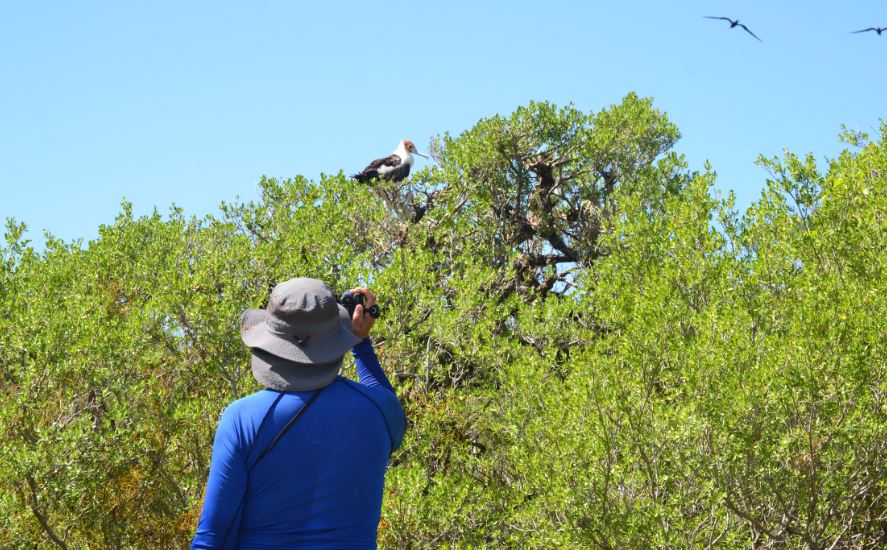
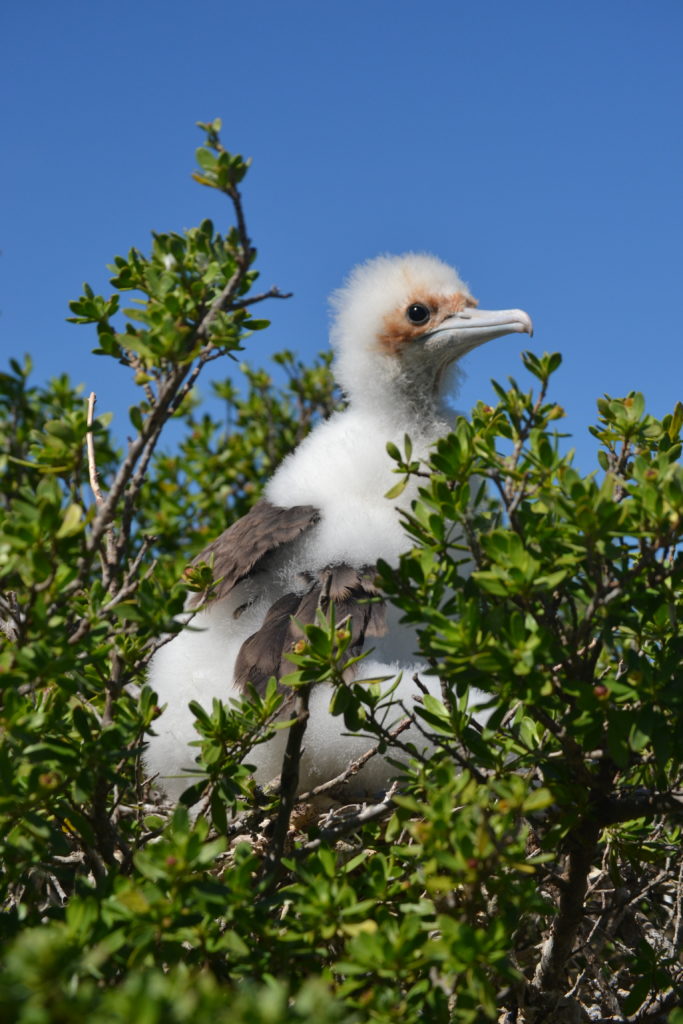

(right) Lesser Frigatebird male Fregata ariel

The real gem of Tahanea was not the breeding colony, however, but the rare little Tuamotus Sandpiper. It was in the hopes of seeing this bird that the trek across the lagoon was made. We anchored behind a beautiful forested little island with the outer reef just beyond it. It made me very smug to watch the white foam of oceanic waves breaking over the outer reef and knowing that for this reason they couldn’t reach us.
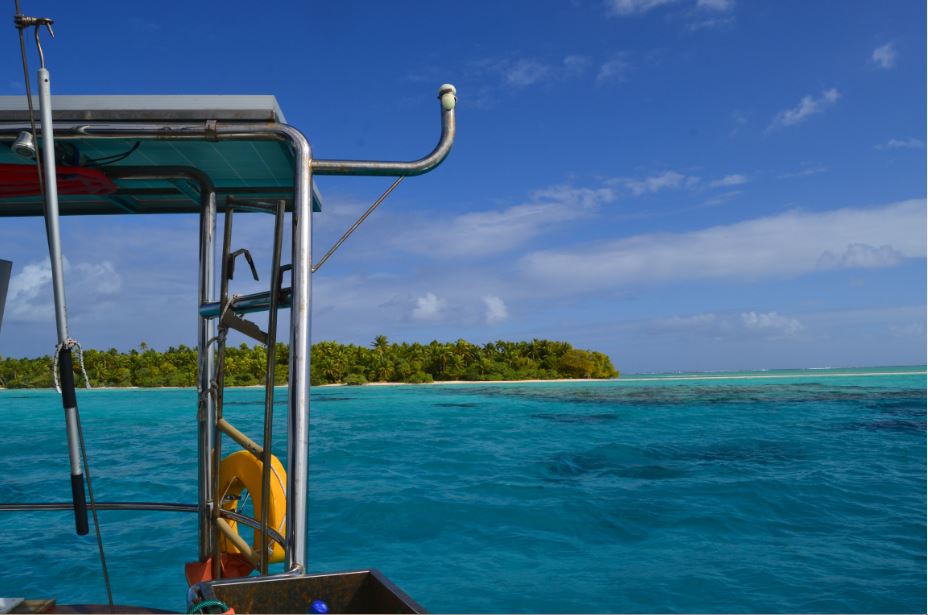
True to my Dad’s adventurous nature, he got everyone (minus the two Karins) to go out to the island that very day, even though it was very late afternoon. We could probably have walked around the island in half an hour, but the beach was so utterly uncombed that it took much longer. Too many shells to be inspected – and eventually the challenge of adding yet one more shell without losing two old ones. X D
And true to the Pacific pattern, the Tuamotu Sandpiper was not where I expected to find it, nor did it act quite the way I thought it should. Normally Sandpipers look like miniature Plovers and they walk where the waves lap the beach in order to pick up the titbits the waves leave behind. These little spotted brown birds, however, looked a bit more like quails with long legs and they haunted the top of the beach, looking for insects at the plants’ border. And not only that, these little birds actually flew into the trees! Now you may think: “well of course they did, they’re birds” – but have you ever seen a Kiewiet (Plover) in a tree? I’ll answer that question for you: No; no you haven’t.
These Sandpipers were also surprisingly tame. If you sat still(ish) long enough they would strut closer and affably ignore you l as just a normal scrub. Just before we left the island, and as we were hauling up the dinghy, one even flew over in its none-sandpiperlike-way and sat in our rigging to chirp us a farewell. I was very thankful that it stayed there until the dinghy was on deck. I find myself quite torn when I notice a really cool bird when we’re right in the middle of some task – and it has happened before that I’ve had to let a bird sighting go, for people and (some) tasks are more important than even rare birds.
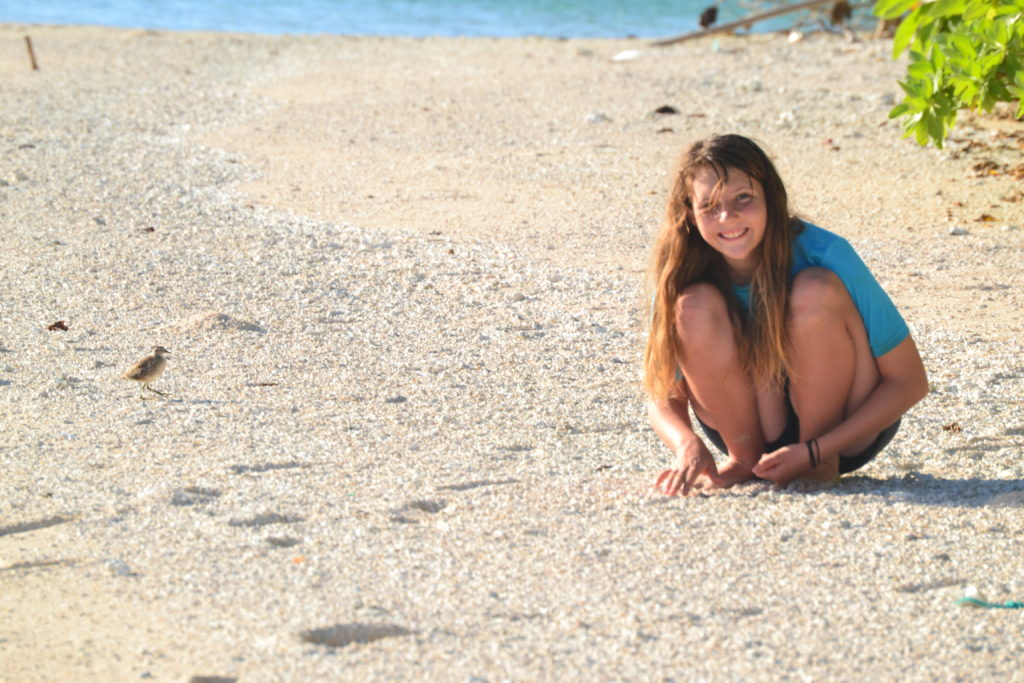
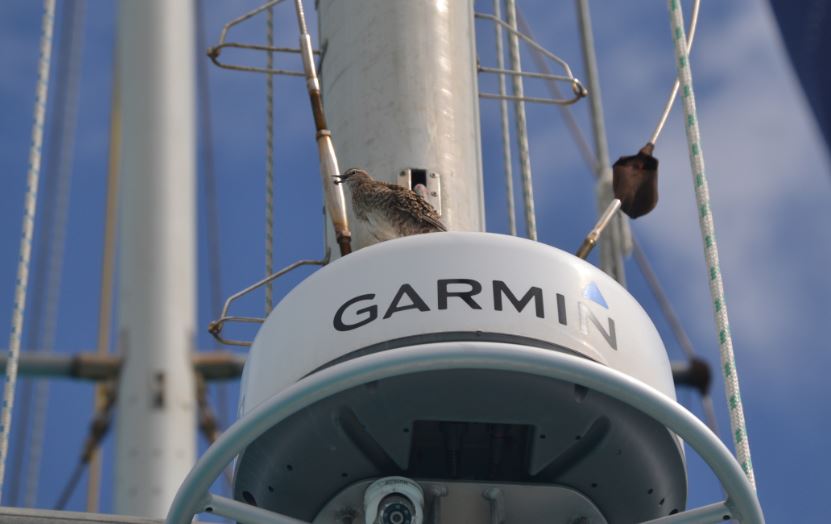
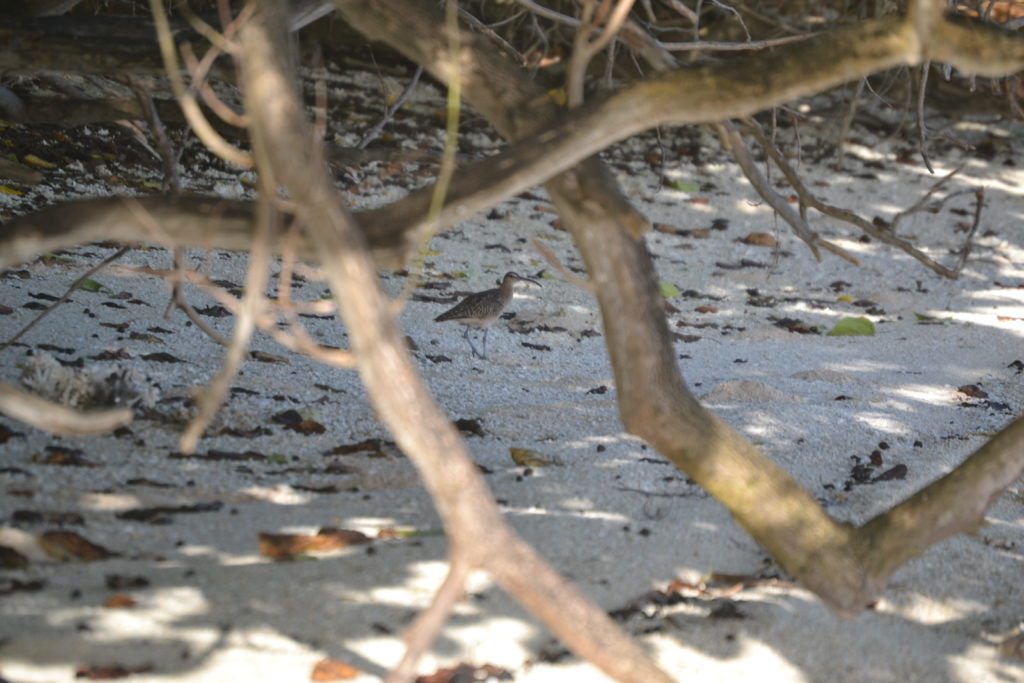
After visiting so many small islands/atolls, the island of Vava’u, Tonga felt absolutely massive. I was reminded of what it felt like to birdwatch on the mainland – to actually see so many birds in one trip that they need to be written down, otherwise I wouldn’t be able to write them down/ identify them later. I’m generally okay with holding up to 5 or 6 bird names and descriptions in my head; between 6-10 I tend forget at least one name/description, and the overall functionality of my brain tends to become focused on birds and thus lose sight of the family’s current goal (like finding shops, looking at the town, buying petrol, getting in and out of the dinghy, et cetera…); at anything more than 10 my brain tends to feel a bit overcooked and I really need to write the list down, otherwise I either forget most of it, or am utterly useless in the reality my family members are in.
In Tonga I also really enjoyed to look for land birds again – like doves, and honeyeaters. In total I only saw 16 kinds of birds on Vava’u, but that still beat all the other islands in the Pacific so far.
There was one particular gem on Vava’u – the Togan Whistler –which my dad and I made special effort to see. Whistlers are secretive birds, tending to stay hidden in thick brush. Yet the males have an amazingly loud, piercing whistle which can be heard from far away. And it was this call we intrepid explorers followed one bright early morning.
I really did feel a bit like an explorer of old. Although we followed a clear car trail, there was a bit of bush-hacking involved and none of the forest around us was even slightly cultivated. Because it was very early morning we didn’t see anyone, either.
After finding the path from the beach, my Dad and I walked a bit aimlessly until we (i.e. I) heard a whistle that sounded a doable distance away. We tracked the source down to a huge, leafless, very snarly and entwined bush – and then we were stumped. We must have been there for at least 15 minutes. You’d truly be surprised at how well a bright yellow bird camouflages amidst all the brown. (I was). No matter from what angle I looked, I just couldn’t spot it . Every time I thought that the bird couldn’t possibly still be there, he would give another piercing whistle and my search would start all over again.
In cases such as these it is never best to look for the bird itself, but rather for the movement the bird causes (very few birds ever sit completely still). The rustle of leaves or the bopping of a twig catches the eye a lot faster than any camouflaged bird – no matter how bright it may be.
When I finally spotted the little bird it was as if it had materialized out of its surroundings. As if it had been invisible, but now I was wearing the right kind of glasses to magically see it. It was pretty cool : )
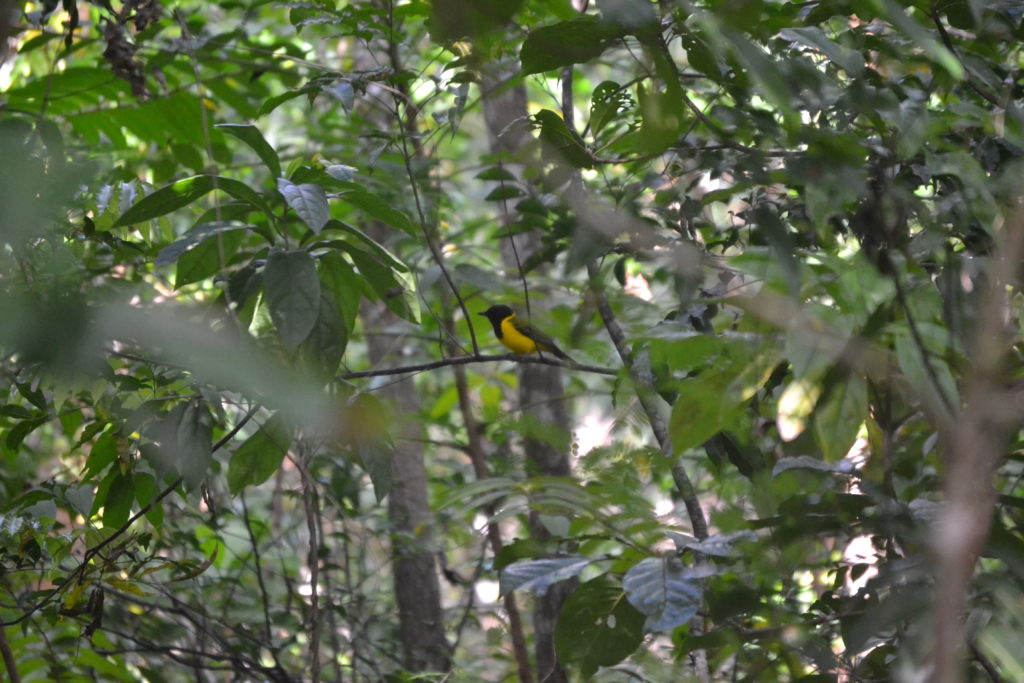
We managed to find one or two more on the way back. This one was so high it threatended to undo my neck, but it was wonderfully in the open.
At our first atoll, Raroia, at the Con Tiki moto we also saw some nesting White Terns Gygis alba. They forgo the need of nests by laying their eggs directly onto the branches of trees. The chicks hatch with extra strong feet, so that they can hang on even amidst strong winds.
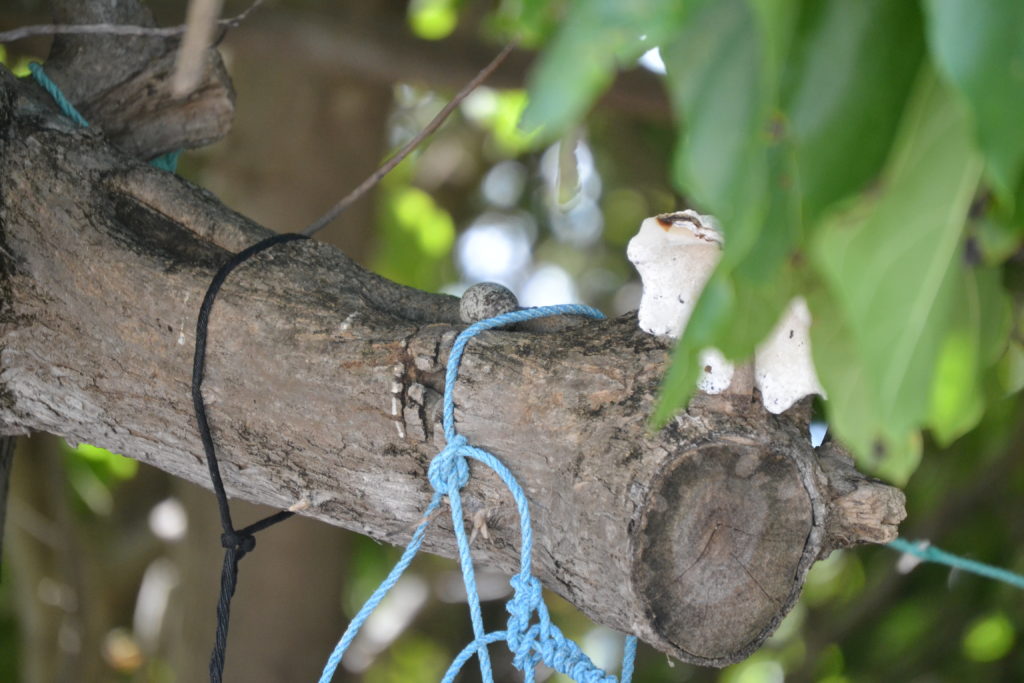
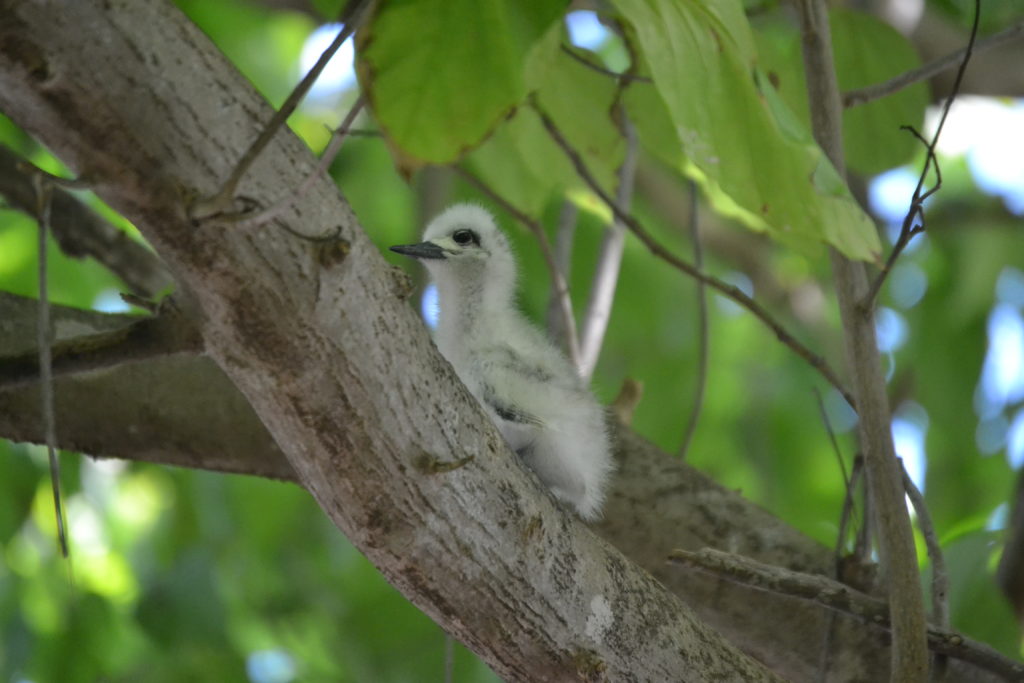
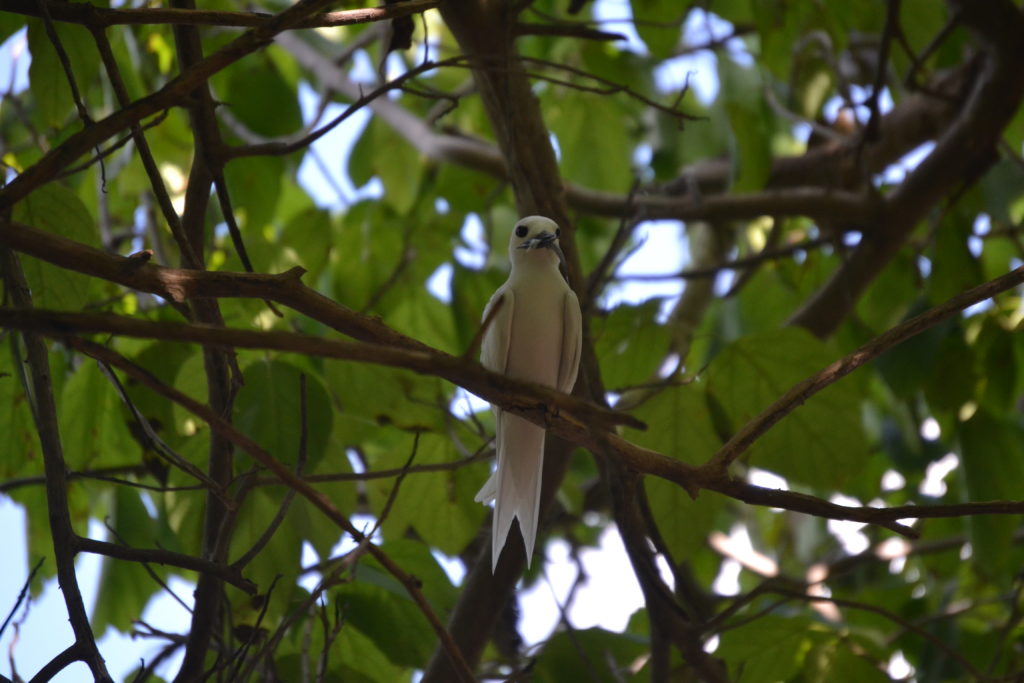
And there you have it – some of my Pacific birding highlights. I’m sure I would have had a lot more to write about the birds in Fiji, except that Marike and I were only there for a week before we had to fly ahead to New Zealand. But that is another story for a whole new post and with its own entire set of birds.

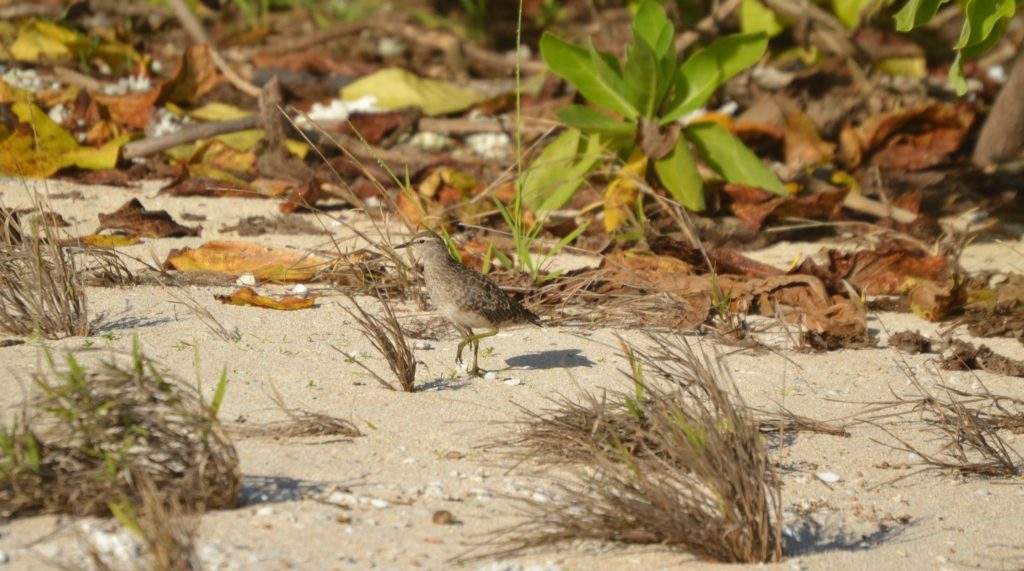
Recent Comments